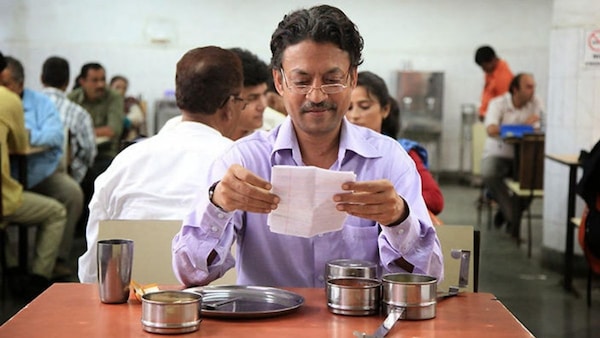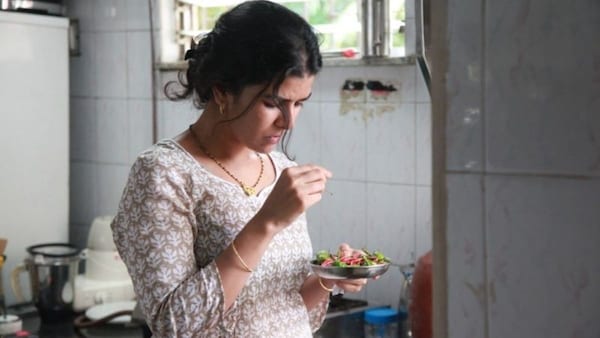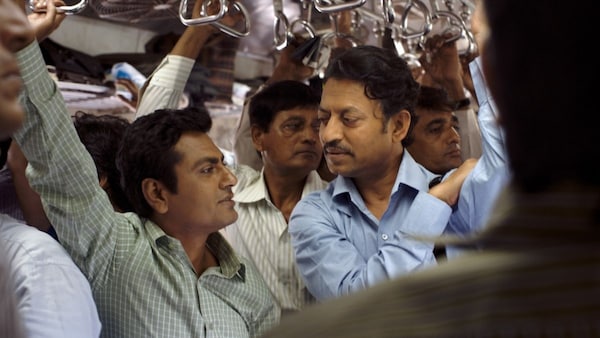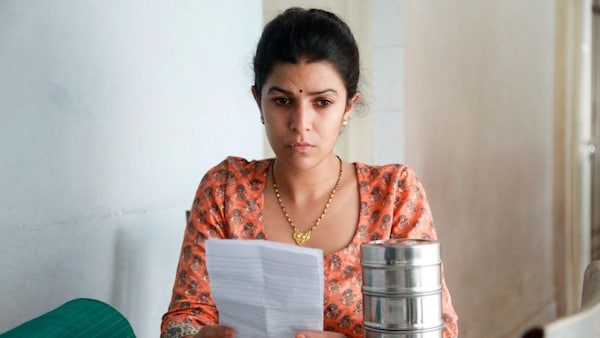As The Lunchbox turns 8, a look back at Irrfan Khan, Nimrat Kaur’s silent ode to Mumbai
Ritesh Batra spun an intricate, multi-layered narrative with The Lunchbox. On the film’s eighth anniversary, examining how it became a silent trooper of loves lost and found.

Last Updated: 12.21 PM, Sep 21, 2021
When Ritesh Batra’s The Lunchbox (2013) hit festival screens across the globe, only a few expected the kind of brouhaha that the feature attracted. Batra’s meet-cute tale of loves found and lost waltzed into the spotlight with its languid, Platonic pace and threatened to challenge the impassioned Bollywood romances of yore. Irrfan Khan unassumingly took up the mantle of a middle-aged widower Saajan Fernandez, quietly living his mundane life out of Bandra house. His reticence spoke volumes of how Mumbai engulfed thousands in its rapid momentum, spitting out the skeletons of lonely, contemplative souls who had very few words to explain their constant sense of ennui.
Batra spun characters who felt lived-in. Ila, the ever-ignored homemaker, had spent years paying obeisance to her husband’s ignorant and insensitive ways, stifling her own agency and self-worth to accommodate their family of three (along with their young daughter Yashvi) into the mould of ‘perfect’; Saajan was the sweet widower, socially distant and observant of how the city’s canvas altered each day, awaiting his final destiny, not even sure what it is; Shaikh, Saajan’s colleague and a junior in the company, was a sprightly, overzealous man who perfectly complemented Saajan’s silences.
The Lunchbox was placed comfortably between the acute paradoxes that Mumbai stood for. Batra played with harsh, coarse soundscapes (of Mumbai local train journeys, the congested streets) with the silences of the interiors in Saajan’s house and office space; Ila’s unfortunate marriage status with its complete lack of companionship as opposed to the beautiful and fulfilling friendship that grew between her and Saajan; Shaikh’s rejuvenated youth placed against Saajan’s retired, old age.

One theme that Batra toyed with, in the film was the layers underneath acute loneliness. He does not simply present the concepts for his viewers to witness; he instead shows them how it unravels in the most unexpected of situations and where the ball drops helplessly. Saajan and Ila occupy two ends of the same spectrum, which require them to stifle the blinding sense of isolation beneath the humdrum of daily life. Forced isolation (one through a bad union, and the other through the death of a partner), often leave spaces for an acute longing, and both Batra’s protagonists swam aimlessly in that zone, trying hard to gulp down the bile that rose every time they had a reality check.
In a perfect world then, Ila and Saajan would be disjointed soulmates, stumbling onto each other and realising they were carrying each other’s missing pieces of the jigsaw. They fit perfectly, and their union was the stuff of dreams. But Batra’s cinematic treatment has always refused to comply with the fanciful and has been a loyal subscriber of the real. As a result, Saajan underwent a surge of guilt and abandoned Ila days after they planned their proverbial escape. The Lunchbox is not a love story, Batra reminds his audiences; it’s the perfect love story – one for the books; one that concludes without the lovers ever uniting.

Batra’s lens captured this intense longing in a particularly poignant scene in which the two protagonists plan to meet for the very first time. The two reach the selected café, Ila nervously sits at a table, looking around with curious, hopeful eyes, gently dabbing her face to wipe off the sweat. Anticipation peaks on her face as she awaits Saajan’s entry. Batra juxtaposes this with a heartbreaking other half – Saajan sits quietly on another table, watching her every move, longingly looking at her, too aware of the baggage of worldly “differences” that he shoulders. But Batra gives proper context to his audiences. Saajan’s sudden retraction is not unfounded. Earlier, a stray incident of someone nonchalantly calling him “uncle” on the train crashes his hopes of a union with Ila. His decision to maintain a safe distance from her is a protective move on his part. But his hyper-practicality is hardly a deterrent when it comes to his unabashed stares. After their prolonged courtship via letters, it is the first time Saajan witnesses the woman he has come to fall in love with. His emotions ooze out of his resigned eyes, making his decision even more distressing.

The Lunchbox was never one-dimensional enough for easy compartmentalisation. It’s a metaphorical love letter to a city that thrives on opposites and yet has the ability to engulf your sorrows into its bottomless pit and give you the hope that you are not alone. But this realisation is hardly ever accompanied by a happily-ever-after. In fact, it’s an incisive reminder that life goes on despite these hollow pockets of isolation, and that all we can hope for is that our self-preservation instincts kick in to allow us to survive this unsatiated need to belong.

 Premium
Premium